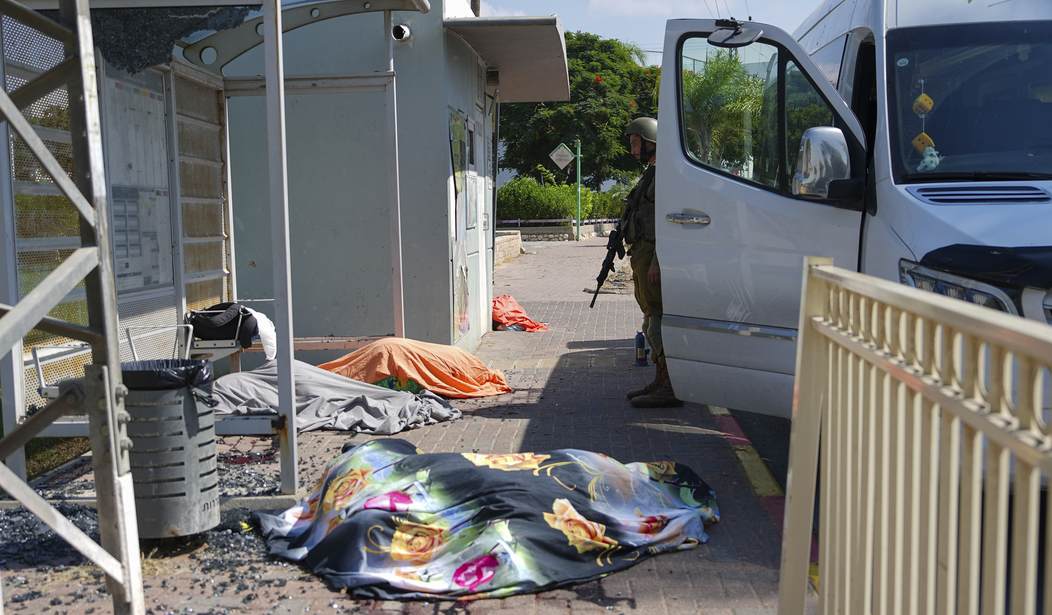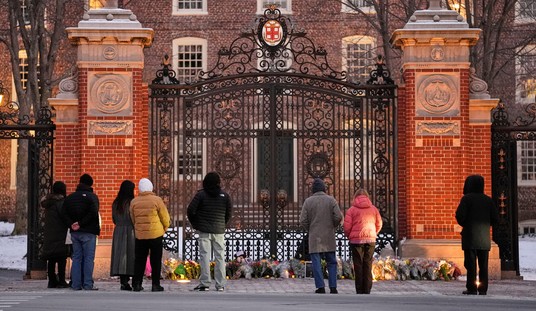While nearly everyone agrees that it was a colossal intelligence failure on the part of Israel and its allies that led to the slaughter on October 7, the ensuing war in Gaza, and other instability in the region, the little-known truth is that it was US military aid to Lebanon provided by Joe Biden's national security brain trust that effectively prevented Israeli intelligence from sniffing out the plan and preventing the attack.
To understand this, one has to look at our history with Lebanon since the Bush (43) administration. If you find yourself asking how the United States ended up funding the internal security apparatus that rolled up Israel's intelligence networks and blinded them to the coming storm, the answer is a lot like the character Mike Campbell in his novel "The Sun Also Rises" explaining how he became bankrupt: "Two ways,” Mike said. “Gradually and then suddenly.”
It started, as most foreign policy misadventures seem to, with an overabundance of hubris in George W. Bush's State Department. In 2006, Israel and Hezbollah fought a nasty little war. Even though Lebanon was a virtual Iranian satrapy under the de facto control of Hezbollah, the Diplomatic SmartSet® reasoned that we needed to try to retain some influence. As a result, we began a program of providing training and equipment to the Lebanese Armed Forces (LAF) and their Internal Security Forces (ISF). It wouldn't take a genius to figure out what would happen. Still, the logical and foreseeable consequences of training the ISF when Iran politically dominated the country were beyond the grasp of a Harvard Kennedy School grad.
The training and equipment paid immediate dividends to Hezbollah as the ISF began trading Israeli agents and sources to Hezbollah in return for survival. This is from an account of a 2009 Lebanese operation.
The chief of Lebanon’s domestic security forces had a warning for the Hezbollah commander: “You’ve been infiltrated.”
With that, Achraf Rifi, head of the U.S.-backed Internal Security Forces, handed over evidence showing that two trusted, mid-ranking Hezbollah commanders were working as informants for Israeli military intelligence, said a high-ranking Lebanese security official with knowledge of the April 2009 meeting.
Wafiq Safa, the security chief for the powerful Shiite Muslim militia and political organization, was silent.
“They were shocked,” said the security official, who spoke on the condition of anonymity because he wasn’t authorized to speak on the subject.
Things moved quickly after that. The Hezbollah commander called Rifi the next day to assure him that the militant group would “take care of” the alleged infiltrators, who were never heard from again, the security official said.
With the rise of ISIS and the effective dissolution of Syria, more money was directed to the LAF and ISF because they were viewed in Foggy Bottom as the glue that was holding Lebanon together. Money to supply the LAF and ISF with equipment and training continued under Obama and grew under Trump. By 2020, the US was spending $242 million annually in Lebanon, up from $213 million in Obama's last year in office.
The training and equipment were excellent because the ISF rolled up 15 Israeli espionage networks in their next round of arrests that took place in December 2021.
Lebanese security forces have uncovered more than 15 alleged Israeli spy networks, according to a report Monday by the Hezbollah-aligned Lebanese Al-Akhbar newspaper.
According to the report, each of the rings operated independently across Lebanon and even Syria. The paper called the discovery “one of Lebanon’s biggest security operations” since 2009.
The operation reportedly began four weeks ago, when the Lebanese Internal Security Forces Directorate began tracking the networks — which it said were tasked with collecting information of Hezbollah and various Palestinian factions in the country — one by one.
In 2022, Lebanon had a financial crisis that resulted in the LAF and ISF being unable to pay the soldiers and secret police. Because those agencies were considered crucial to Lebanon's survival as a nation, the Biden White House stepped in to reprogram $67 million in Foreign Military Financing to pay for salaries in the LAF and ISF.
The White House made the right decision more than six months ago, when it increased its support for the Lebanese Armed Forces (LAF), following a precipitous devaluation of the Lebanese lira that has left soldiers without a living wage and hamstrung the military’s basic activities. The LAF performs critical functions that go far beyond the role of militaries in typical countries: It provides vital domestic policing of sectarian feuds; it monitors and deters the active threat posed by the Islamic State and similar groups; it patrols the country’s porous borders; and in times of crisis—like the present—it is responsible for crowd and riot control. Further, the military is perhaps the sole institution in Lebanon that welcomes members of all sects and serves the national interest rather than the agenda of a single warlord or sect.
Simply put, if Lebanon can’t pay its soldiers, those soldiers can’t hold Lebanon together.
In January 2023, the State Department came through with another $72 million to support LAF and ISF salaries.
As the US-funded ISF was rooting out Israeli intelligence networks, what else was happening in Lebanon?
Hassan Nasrallah, the leader of Hezbollah, held an hourslong online meeting in March with an elite group of strategists from all the Iran-backed militias and told them to get ready for a war with Israel with a scope and reach — including a ground invasion — that would mark a new era, according to two participants from Iran and Syria. The participants spoke on the condition of anonymity because they were not authorized to publicly discuss the meeting.
There are conflicting accounts of whether these activities were leading specifically toward last week’s attack by Hamas, which left 1,200 Israelis dead and shattered the country’s sense of security.
Some people familiar with the operation said that a tight circle of leaders from Iran, Hezbollah and Hamas helped plan the attack starting over a year ago, trained militants and had advanced knowledge of it. That account is based on interviews with three Iranians affiliated with the Revolutionary Guards, one Iranian connected to senior leadership and a Syrian affiliated with Hezbollah.
The above report places the beginning of planning and training for the October 7 massacre of Israeli civilians in the late summer of 2022. This was carried out while a US-trained, equipped, and funded Lebanese counterintelligence service provided operational security for the Hamas-Hezbollah-Iran planning and training period. As if to underscore the abject failure of the "retain influence" and "glue that holds Lebanon together" crowd, no one in the ISF, which we had trained and equipped for over a decade and whose salaries we were paying, dropped a dime to US intelligence or diplomatic personnel.
None of this is to say that the Biden national security goat rope knew the attack was coming, but it is hard to see how the outcome differed from being an active participant. Had we not been overawed by our cleverness and let Lebanon descend into its natural state, which is chaos and violence, Hamas would not have had a secure area in which to plan and to train, and the coming attack would probably have been discovered and prevented.
Author's Note: My primary resource for this story is "Eyeless in Gaza," posted at Tablet Magazine by their news editor, Tony Badran. I've known Tony for going on 20 years, back when he ran an indispensable blog of the happenings in Lebanon and Syria called "Across the Bay." The conclusions drawn from his story are mine.













Join the conversation as a VIP Member